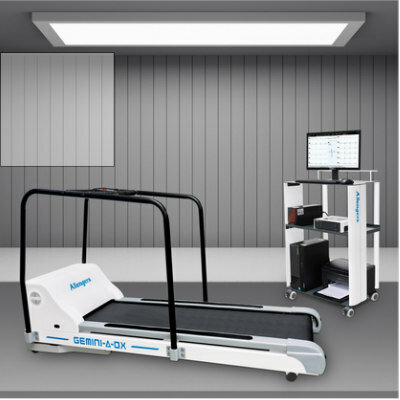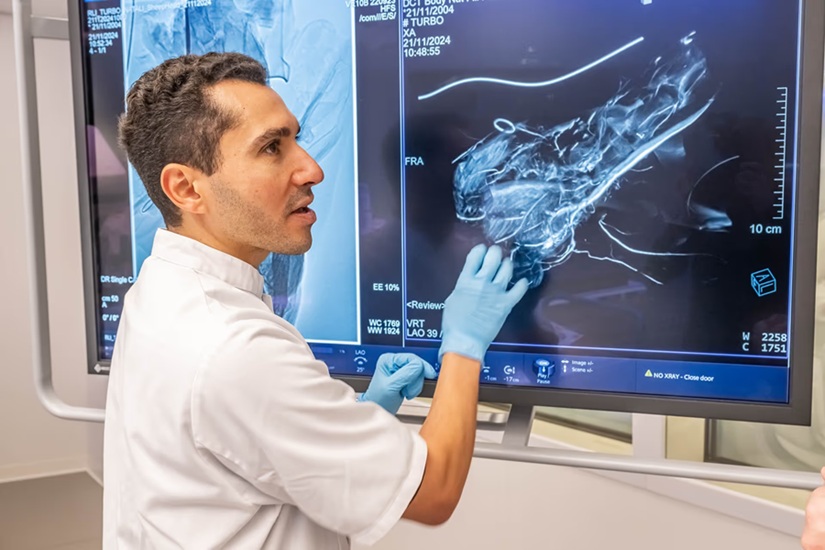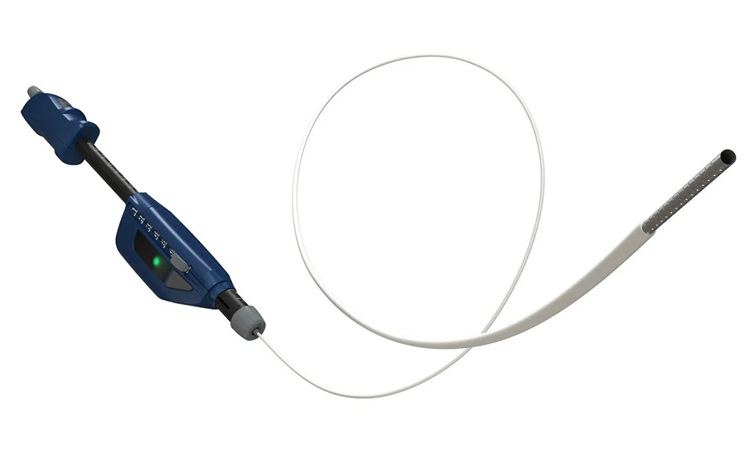Radial Scars Following Breast Biopsy Advocate Surgical Excision
By HospiMedica International staff writers
Posted on 05 Apr 2010
Radial scars encountered after breast biopsy should prompt surgical excision to exclude possible malignancy, according to a new study.Posted on 05 Apr 2010
Researchers at the University of Udine (Italy) conducted a retrospective record review of 4,458 consecutive imaging-guided breast biopsies. The mammographic images, sonographic images, and surgical findings were reviewed in 62 cases in which surgical excision results were available of the radial scars found during the guided biopsy. The underestimation rate of the malignancy of percutaneous biopsy was calculated, and differences in sonographic and mammographic appearances between the radial scars (with and without associated malignancy) were then evaluated.
The results showed that the percutaneous malignancy underestimation rate was 8% overall, with 9% for sonography guided 14-gauge biopsies, and 5% for stereotactically guided 11-gauge vacuum-assisted biopsies. Mammographic and sonographic appearances were not significantly different between radial scars, with or without associated malignancy. The researchers thus concluded that a diagnosis of a radial scar based on percutaneous biopsy results or mammographic and sonographic appearances of a lesion diagnosed as a radial scar could not exclude an associated malignancy at subsequent surgical excision. The results of the study were published in the April 2010 issue of the American Journal of Roentgenology (AJR).
"Radial scars are complex breast lesions that are classified as benign; however, up to 40% of them are associated with an underlying malignancy,” said lead author Anna Linda, M.D., of the institute of radiology. "Our results suggest that surgical excision is required for lesions yielding radial scars at percutaneous biopsy regardless of their mammographic and sonographic appearance.”
Radial scar, also known as sclerosing complex lesion, represents a possible premalignant lesion generally 10 mm or less in diameter, consisting of a central fibroelastotic zone from which tubular structure radiate; it may be two layered or exhibit intraluminal proliferation. It is also a radiological entity, detected via mammography by typical but not specific signs: the presence of the central radiolucency; the presence of radial long thin spicules; varying appearance in different projections; radiolucent linear structures parallel to spicules; and absence of palpable lesion or skin changes.
Related Links:
University of Udine














